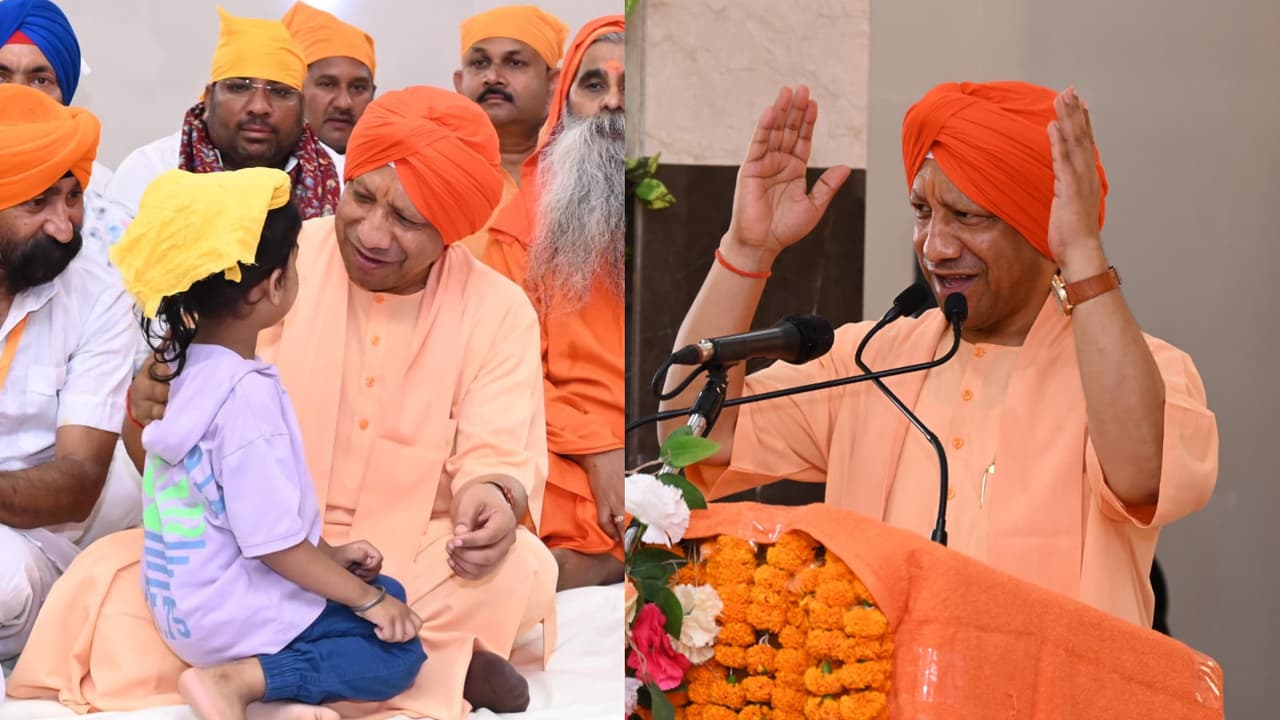Yogi Adityanath has renovated Gurudwaras, upgraded facilities, and honored Sikh traditions at his residence, emphasizing the shared heritage of Sikh and Sanatan cultures. This contrasts with previous governments that neglected Sikh contributions.
Chief Minister Yogi Adityanath, on Sunday, once again paid tribute to the bravery, valor, and sacrifice of the Sikh community at Gurudwara Shri Guru Singh Sabha in Paidleganj, Gorakhpur. On this occasion, he inaugurated tourism development projects, unveiled the renovated Gurudwara Bhawan, and dedicated upgraded facilities to the devotees.
In the last eight and a half years, the work done by CM Yogi for the development of Sikh religious places and for preserving their honor is unprecedented—something that had remained unimaginable for decades. The Sikh tradition, which sacrificed even its youngest Sahibzadas for the protection of Sanatan Dharma and the nation, was long neglected by previous governments. Neither were their sacrifices included in the curriculum, nor was the community accorded the respect it deserved in public life. Chief Minister Yogi Adityanath has revived this forgotten heritage with dignity and pride.
From the very beginning of his tenure, CM Yogi made it clear that Sikh tradition is an inseparable part of the grand stream of Sanatan culture—where sacrifice and the defense of dharma are supreme. For the first time, the Chief Minister’s residence itself became a center of Sikh faith, where Guruvaani echoed, the sacrifices of the Sahibzadas were remembered, and new traditions were initiated. By bowing his head at Gurudwaras and continuously engaging with Sikh delegations, the Chief Minister reaffirmed that Sikh pride is an integral part of Uttar Pradesh’s cultural identity.
Among his landmark initiatives, in December 2020, the glorious history of Sikh Gurus was introduced into the school curriculum of Uttar Pradesh for the first time. In Lucknow, “Khalsa Chowk” was established in Alambagh, symbolizing the honor and pride of Sikh tradition among the people. The Yogi government also gave official recognition to “Sahibzada Diwas,” conveying a powerful message—that the martyrdom of Guru Gobind Singh Ji’s Sahibzadas is as sacred and inspiring as the sacrifice of Lakshman in the Ramayana or the valor of Abhimanyu in the Mahabharata.
Earlier, the Chief Minister’s residence had already hosted a grand celebration of Guru Nanak Dev Ji’s 550th Prakash Parv, where Guruvani was recited and the sacrifices of the Sahibzadas were commemorated. In this way, CM Yogi not only revived Sikh traditions but also reconnected them with the eternal flow of Sanatan culture.
The most recent and historic example of this vision is the launch of the “Panch Takht Yatra Yojana.” This initiative is not merely a pilgrimage—it is a living bridge between the Sikh faith and the Sanatan culture. For the first time, the Uttar Pradesh government has ensured that Sikh devotees from the state can visit all five sacred Takht Sahibs—Sri Anandpur Sahib and Sri Akal Takht Sahib (Punjab), Sri Damdama Sahib (Punjab), Sri Takht Sachkhand Sri Hazur Sahib (Nanded, Maharashtra), and Sri Harmandir Ji Sahib (Patna, Bihar). Under the scheme, devotees are not only facilitated in their darshan but also provided financial assistance of at least ₹10,000 per person.
Through such historic steps, CM Yogi Adityanath has proved that his government does not stop at announcements—it is committed to restoring Sikh pride in its truest form and inspiring future generations with this glorious legacy.
Chief Minister Yogi Adityanath often recalls the immortal sacrifices of the Sikh Gurus. He believes that the Sikh and Nath traditions flow from the same stream of patriotism and sacrifice. His visits to Gurudwaras and the reverence he shows there are not mere formalities, but a conscious effort to revive the historic bond that Guru Nanak Dev Ji and the Gorakhnath sect had established centuries ago.
The Yogi government has consistently prioritized the development of Sikh pilgrimage sites in Uttar Pradesh. Continuous efforts are being made to upgrade infrastructure around Gurudwaras, provide modern facilities for devotees, and ensure the smooth organization of religious events. It is also noteworthy that, just as Prime Minister Narendra Modi elevated Sikh pride on the global stage—most prominently through the Kartarpur Corridor—the Uttar Pradesh government has carried forward this vision by giving special recognition to Sikh Akharas and Gurudwaras in landmark events such as the Prayagraj Mahakumbh.
This is the same Uttar Pradesh where, under previous governments, the sacrifices of Sikh Gurus neither found a rightful place in history nor received due respect in public life. Attempts were even made to separate Sikh identity from the Sanatan tradition. In contrast, CM Yogi Adityanath has shown that when leadership is guided by faith and patriotism, traditions not only endure but also become an inspiration for future generations.
On the occasion of the Baisakhi festival, the Chief Minister had emphatically stated that Sikh tradition is an immortal current of Sanatan Dharma—one that has taught citizens that protecting religion and serving the nation are the highest goals of life. Today, this spirit has taken deep root in Uttar Pradesh: Sanatan and Sikh traditions are not separate, but two streams of the same cultural heritage. By carrying this shared legacy to new heights, CM Yogi is not only reviving history but also shaping the direction of the future.
